Saber saws developed rapidly in the carpenter world, but until small efficient DC motors developed, were slow in coming to the modelling field. A few European manufacturers introduced them, followed closely by Black & Decker, whose line fell by the wayside rapidly. Apparently most people viewed them as nice little toys. I was convinced of their merits a real tools, while attempting to open a fan hole in a computer bench top, were my super duper saber saw would not fit. The B & D "toy" did the job, where all else failed. It was a little slow, but it succeeded very well.
One of the main advantages of the the single ended blade table saw is that for internal cuts, blade can enter and leave a hole without dismantling the clamp. Size of work piece is only limited by how well the table supports the overhang when saw near one edge.
With the exception of Unimat. all tools covered use adjustable DC power packs to control speed, The major problems again are limited variety and compatibility of blades, plus different power connectors.
Probably presenting the least expensive approach, the Maxicraft line of modelling power tools offers a wide variety of tools based on several rotary handtools and accessories. Among these are a freehand saber saw and a table type adapter. A right angle, cam adapter with foot plate is coupled to the powered rotary tool to provide the reciprocating action and chuck the blade. The foot plate is tiltable for bevel cuts.

Note: Adjust brightness and contrast for optimum viewing.
MAXICRAFT SABER SAW
In addition to mounting the drill press, the base plate can alternately mount the inverted saber saw for table use. A clamp and a hole hold the unit securely. The foot plate is a little small, but three holes permit adding a larger plate, if necessary.

Note: Adjust brightness and contrast for optimum viewing.
MAXICRAFT TABLE SAW ACCESSORY
On the other hand , Minitool uses dedicated units based on the same housing, at greater expense. The required adapters are built into the end bell. At first, the square housing is not quite as comfortable as the round ones, but after a little experience, the difference is not noticeable
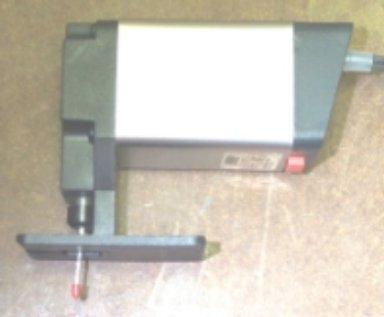
Note: Adjust brightness and contrast for optimum viewing.
MINITOOL SABER SAW
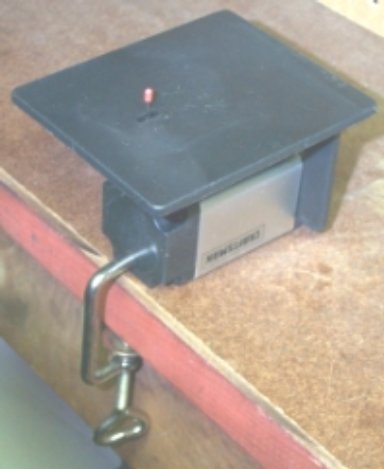
Note: adjust brightness and contrast for optimum viewing.
MINITOOL TABLE SAW.
Black & Decker also uses dedicated units, which are larger and more powerful. The integral plastic foot does not tilt. No table mount has been found. It can accept standard saber saw blades.
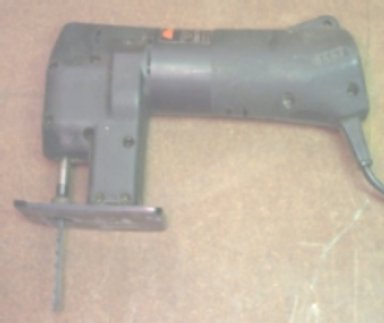
Note: Adjust brightness and contrast for optimum viewing.
BLACK & DECKER SABER SAW
The Unimat has enough power to handle almost any hobby sawing very accurately with the correct blades. Since the space below the table is open, access to clamp is relatively easy. It has been used to cut and shape brass drainage fittings to make ferrules to mount a sailing mast on a canoe thwart. Accurate cutting with larger saws was impractical to set up.
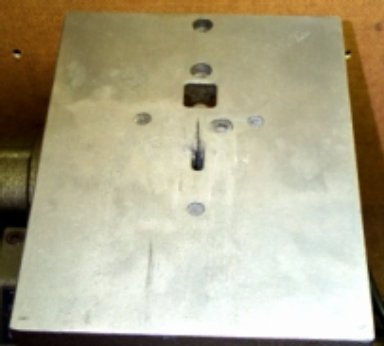
Note: Adjust brightness and contrast for optimum viewing.
UNIMAT SINGLE ENDED BLADE SAW
BLADES
In most cases the choice of blades, from a wide selection available, is only limited by what will fit the chuck or clamp and clear the foot plate or table. Minimum length is determined by thickness if material being cut and stroke length of tool. Most blades are of sufficient length commensurate with power of motor. SELECTION OF OTHER BLADE PARAMETERS_ is covered under Power Saws. In some cases, fore and aft play may require insertion of a short strip of metal spacer behind blade tang. Cut off tangs of worn blades work well. As substitutes , many abrasive coated blades, including diamond, are available.

Note: Adjust brightness and contrast for optimum viewing.
SIZE COMPARISON OF SABRE BLADES.
Minitool 7/8".
Maxicraft 2".
Black & Decker 2".
Saber 3 1/4".
Saber abrasive edge 2 1/4".
Reciprocating 5 1/4"
USEFUL LARGER SAWS
Since there are many jobs around the layout that modelling saws will not handle, one or more larger saws could be helpful. Probably the most useful is the sabre saw for cutting curved sheets, support members and bar stock. Basically they have replaced almost every hand saw from keyhole to hacksaw with labor saving power. Some have desirable speed controls and most have a tilting foot plate to cut bevels. Some have a latching knob which permits changing direction of cut with respect to the handle. Carrying this a little bit farther, others have offset clamps; which when unlatched, permit blade to follow direction of pressure. For internal cuts, some blades can perform plunge cuts to eliminate drilling starting holes. An extremely wide range of blades includes tapered back, finishing, hard metal, knife, abrasive and diamond; in many special shapes.
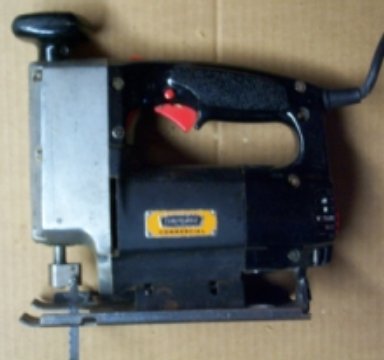
Note: Adjust brightness and contrast for optimum viewing.
LARGER SABER SAW.
with all the above .
For heavier duty cutting, the reciprocating saw offers blades up to 16" in length. Powerful and large enough to handle almost any layout task, in some cases it rivals the chain saw for trimming branches and felling smaller trees and is definitely safer.

Note: Adjust brightness and contrast for optimum viewing.
RECIPROCATING SAW.
BACK TO POWER SAWS
BACK TO TOOLS INDEX
